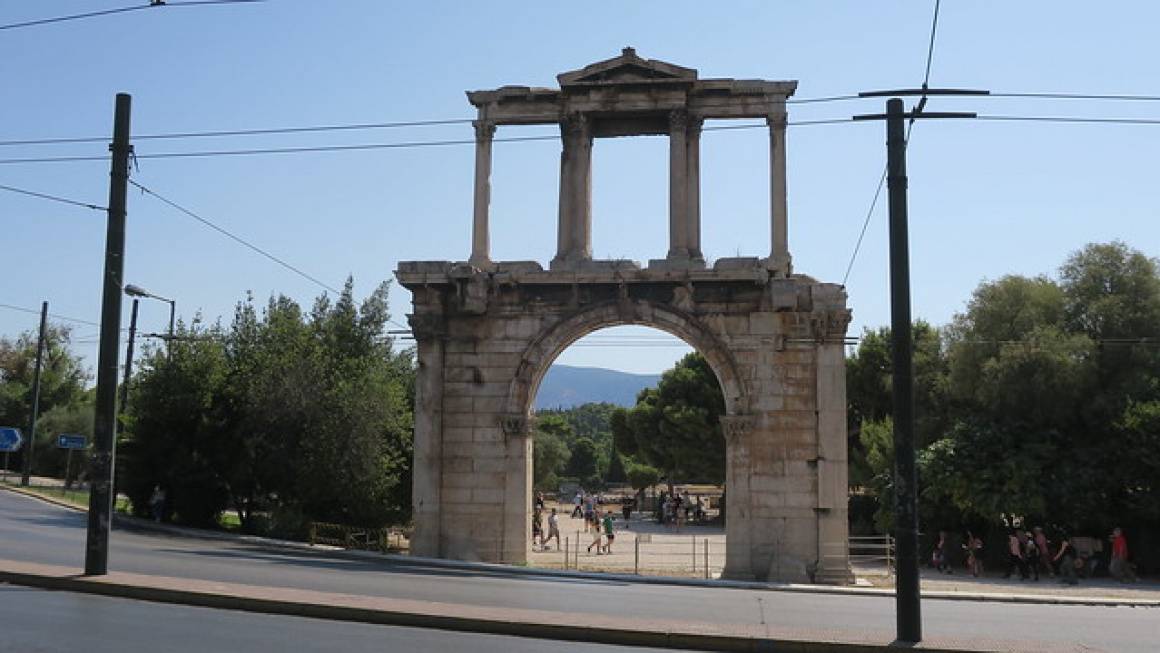Stepping onto Amalias Avenue from the bustling city centre, you will spot a monumental arch that has withstood centuries of change. Locals often call it “Hadrian’s Gate” (or Hadrian’s Arch), an iconic structure that once served as a symbolic boundary between the ancient city of Theseus and the new district founded by the Roman Emperor Hadrian. This graceful monument is a testament to the layers of history woven into Athens, and it still beckons travellers who wander through the city’s winding streets.
Historical Background and Significance
Erected in the 2nd century AD, Hadrian’s Gate stands at the edge of what was once the ancient heart of Athens. On one side, the inscription hails the city as Athens, “the ancient city of Theseus,” while the other side proclaims it as the city of Hadrian. The dual inscriptions reflect the emperor’s admiration for Greek culture, as well as his desire to reshape the urban landscape under his own patronage.
One detail that many visitors overlook is how the arch was cleverly positioned to mark a transition: passing through its marble vault once meant leaving the old core of Athens behind and entering the new Roman quarter. In the lively discussions I’ve heard among older Athenians, there’s still a hint of pride in how the city seamlessly blended its Greek heritage with Roman influence.
Architectural Highlights and a Hidden Detail
Hadrian’s Gate was built in a hybrid style combining Corinthian and Ionic elements, which was not entirely common in ancient Greek structures. Stand a moment beneath its vaulted passage, and you will notice how the decorative flourishes on the upper level differ subtly from the simpler lines below. This variation reflects the evolving architectural tastes of the time.
A lesser-known fact is that, if you visit late at night, the arch takes on a new life under soft yellow lighting. Standing beneath the illuminated columns, you can see the shadowy outlines of the Temple of Olympian Zeus in the distance. It’s a quiet moment shared by only a handful of curious souls, and it offers an evocative glimpse into Athens’ nocturnal beauty.
Discovering the Neighbourhood
The area around Hadrian’s Gate is perfect for wandering on foot. A short stroll will lead you to the edges of Plaka, a neighbourhood known for its narrow lanes and neoclassical houses. Beyond Plaka, you can continue towards the Acropolis and Parthenon or even the Roman Agora. The route is typically well-signposted and easily navigable, which makes exploring these landmarks in one afternoon quite feasible.
While visiting, keep an eye out for smaller, family-run cafés in the side streets. Many Athenians will tell you that the best spots for a midday break aren’t always the most obvious ones facing the main roads. If you follow the faint sound of Greek music echoing down a side alley, you might discover a humble taverna serving homemade dolmades or fresh spanakopita, experiences that rarely make it into conventional guidebooks.
What to Know Before You Go
Hadrian’s Gate is free to visit at any hour, although daytime offers the clearest view of its details and inscriptions. However, arriving just before sunset gives you an opportunity to see the monument in two different lights, basking in the day’s final glow and then gradually taking on a new character as the city lights emerge.
A personal tip is to head for the arch on a Sunday morning when traffic is lighter. The avenue feels quieter then, and you can wander around the base of the monument without the usual clamour. If you’re keen on photography, you’ll find that the reduced crowds and softer morning sun produce lovely, unobstructed shots.
Why It’s Worth Your Time
Hadrian’s Gate may be smaller than some of Athens’ other wonders, but it holds an essential place in the city’s narrative, fusing legendary Greek heritage with Roman innovation. It’s a constant reminder that Athens is not defined by one single era, but by the centuries of change and cultural blending that continue to shape its character.
Stand there under the marble archway, and you will sense both the grandeur of antiquity and the lively pulse of the modern metropolis. This distinctive duality is what makes Athens endlessly fascinating, and it is precisely why Hadrian’s Gate remains one of the city’s most treasured landmarks.



 'Arch of Hadrian, Athens' - Attribution:
'Arch of Hadrian, Athens' - Attribution: